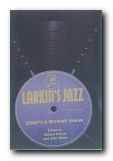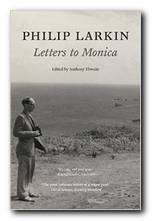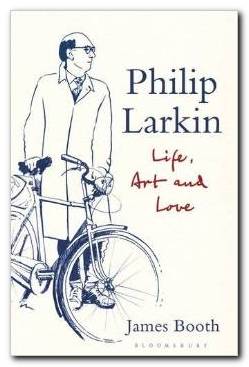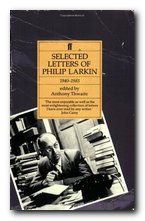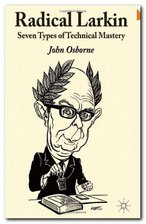a case of wrongful critical conviction
During his lifetime, Philip Larkin, the self-effacing ‘Hermit of Hull’ (where he was the University Librarian), was held in public affection as an ‘accessible’ poet, minor novelist, and quirky jazz critic. His death in 1985 was mourned as the passing of – in W. H. Auden’s phrase – ‘a master of the English language’. But with the publication of his Selected Letters, edited by Anthony Thwaite (1992), and Andrew Motion’s biography, Philip Larkin: A Writer’s Life (1993), the tide began to turn.
Germaine Greer characterised Larkin’s verse as ‘anti-intellectual, racist, sexist, and rotten with class-consciousness’ while Tom Paulin condemned the Letters as a ‘revolting compilation which imperfectly reveals the sewer under the national monument that Larkin became’.
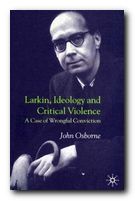 What Paulin and other commentators failed to understand was the fundamental distinction between private and public correspondence. Unless one is a compiler of the dreadful and usually seasonal round robin to friends and acquaintances, letters are written to individuals, and take into account their sensibilities. Larkin certainly knew this, yet a recent eBay auction listed Motion’s biography under the key words: ‘Homosexual Pornography Poet PHILIP LARKIN Nazi’.
What Paulin and other commentators failed to understand was the fundamental distinction between private and public correspondence. Unless one is a compiler of the dreadful and usually seasonal round robin to friends and acquaintances, letters are written to individuals, and take into account their sensibilities. Larkin certainly knew this, yet a recent eBay auction listed Motion’s biography under the key words: ‘Homosexual Pornography Poet PHILIP LARKIN Nazi’.
John Osborne’s purpose in this adversarial and provocative polemic is to rescue Larkin from both his disciples and his detractors, who have combined and conflated the man with his work. As Osborne cautions, ‘a narrator of invented experiences is not to be confused with an actual author and real ones’.
Read correctly, neither Larkin’s poems nor his prose reveal an ‘anti-Modernist’, Little Englander, blinkered jazz lover, homophobe or racist bigot. On the contrary, he emerges as a magisterially informed, radical and subversive writer, fully conversant with and sympathetic to the plight of oppressed minorities – including African-Americans, immigrants and the white working classes.
In an excellent chapter on ‘Larkin and Modernism: Jazz’, Osborne contends that from its beginnings jazz, with its stylistic and creative innovations, was ‘Modernist music par excellence’ and was seen as such. But Larkin, because of his famous/notorious anti-modernist stance (‘Parker, Pound and Picasso’), liked to pretend that jazz stopped being ‘jazz’ with the bebop revolution of the 1940s. It didn’t, and he knew it.
Osborne also offers a brilliant (and persuasive) interpretation of the poem ‘For Sidney Bechet’ and also notes that Larkin’s other jazz hero was Louis Armstrong who, he suggested, was ‘certainly quite comparable’ in cultural stature with Pablo Picasso. So much for Larkin the private racist and public ‘anti-Modernist’.
Where the ‘pink professoriate’ and ‘self-appointed guardians of public morality’ – including Terry Eagleton, Lisa Jardine – have castigated Larkin as a dyed-in-the-wool Conservative, Osborne reminds us that the only poem he was commissioned to write by the Tory party (‘Going, Going’) was ‘so little to their liking that they brutally censored it before publication’.
Again, far from being unaware of working-class culture, Larkin identified (even if he did not identify with) its consumer novelties: ‘split-level shopping, transistors, deodorants, the Pill, Bri-Nylon, Baby-Doll nighties, the Beatles’ first LP’. In poems like ‘Sunny Prestatyn’, Osborne suggests, Larkin deconstructs the ‘discourse of modern advertising’ as profoundly as does the work of pop artists like Roy Lichtenstein or Andy Warhol.
Despite his myopic scholarly detractors, Larkin’s influence and reputation have been recognised by musicians, artists and creative writers. Leonard Bernstein nominated Larkin as the twentieth century’s greatest poet (Osborne views him as ‘the greatest poet of doubt since [Thomas] Hardy’). The paintings in Damien Hirst’s latest exhibition are all titled after a Larkin poem, while Ian McEwan, Zadie Smith and Julian Barnes have acknowledged his ‘liberating role’ in their work.
Larkin, Ideology and Critical Violence deserves a wide readership. It sheds fresh light on his oeuvre and its sources, and, most importantly, sends one back to the poems (and prose) with sharpened perceptions.
Academic students of literature will also welcome the two chapters on ‘Larkin and Philosophy’. Only occasionally does Osborne lapse into the arcane jargon of the new literary criticism, as in his endorsement of Barbara Everett’s recognition of Larkin’s indebtedness to T.S. Eliot. She, we are informed,
appreciates that this Eliotic citationality desiderates a text-centred rather then an author-centred methodology, the incorporation of elements by other hands generating a problematic of multiplicity, heterogeneity and exteriority that challenges the author’s sovereignty.
Larkin’s response to this intelligence might well have been: ‘In a pig’s arse, friend’. But he would surely have welcomed the aside that ‘The worst that anyone has discovered about Larkin are some crass letters and a taste for porn softer than what passes for mainstream entertainment in contemporary cinema or television (let alone the internet).’
© John White 2008
![]() Buy the book at Amazon UK Buy the book at Amazon US
Buy the book at Amazon UK Buy the book at Amazon US
John Osborne, Larkin, Ideology and Critical Violence: A Case of Wrongful Conviction, Palgrave Macmillan, 2008, pp. 304, ISBN: 1403937060
More on literature
More on the novella
More on literary studies
More on short stories
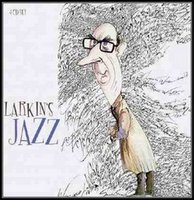
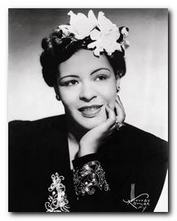 The second disc collects some of the music he experienced at University, along with fellow student Kingsley Amis who became a lifelong friend. Outstanding names here include Bix Beiderbecke, Eddie Condon, Muggsy Spanier, and Gene Krupa. You might be tempted to conclude from this that his taste was mainly for white musicians, but to his credit Larkin was an early enthusiast for blues singers such as Bessie Smith and Billie Holiday.
The second disc collects some of the music he experienced at University, along with fellow student Kingsley Amis who became a lifelong friend. Outstanding names here include Bix Beiderbecke, Eddie Condon, Muggsy Spanier, and Gene Krupa. You might be tempted to conclude from this that his taste was mainly for white musicians, but to his credit Larkin was an early enthusiast for blues singers such as Bessie Smith and Billie Holiday.